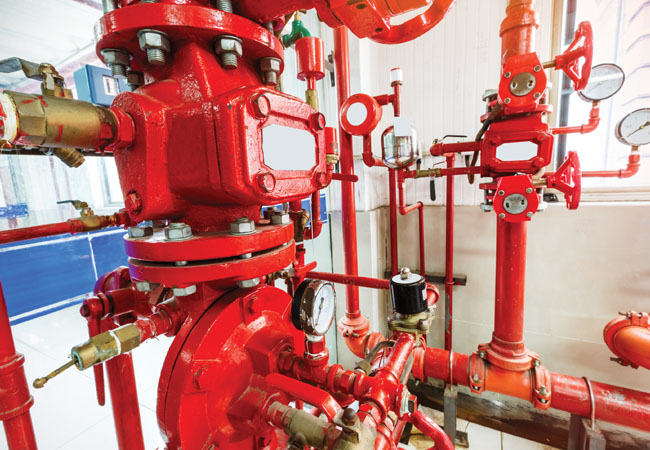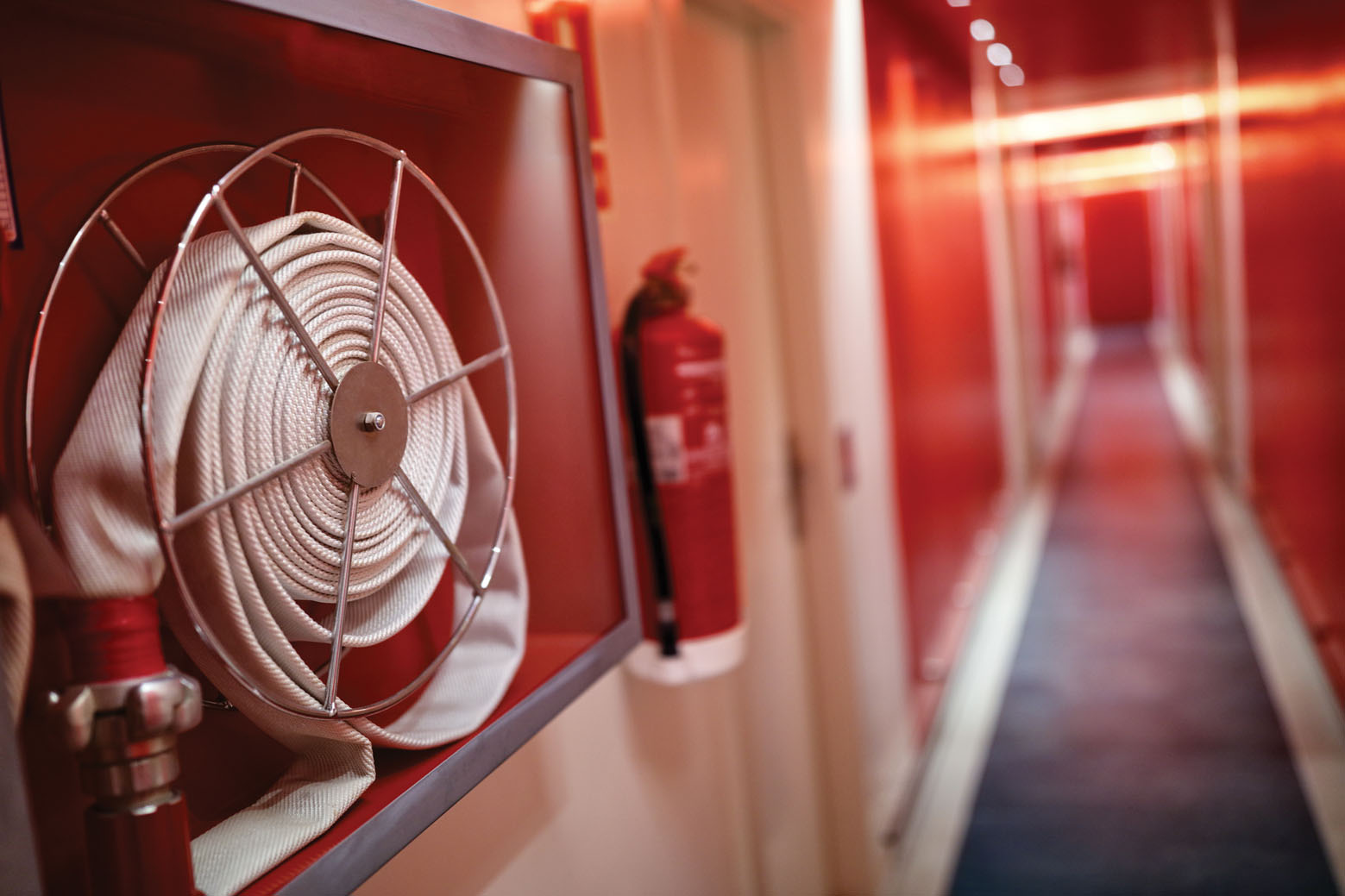
The tragic fire at Grenfell Tower, in West London, last month has turned the spotlight on the importance of fire engineering in buildings. The new guide addresses the design of essential life-safety systems to protect building occupants, firefighters, businesses and property, including heritage buildings.
Fire engineering is carried out on premises, including those that – because of the uniqueness of their design – cannot conform to regular building codes. The benefits that fire-engineering alternatives can bring to a design include: increased flexibility; reduction in construction and/or running costs; and measures more suited to the building use.
CIBSE Guide E Fire Safety Engineering is intended to be the ‘go to’ document, giving building services engineers and fire life-safety consultants quality guidance on a broad range of fire-engineering issues. It has been significantly updated for 2017 and substantially improved by streamlining the chapters, and will be published this autumn.
The fourth version of the guide has been updated by experienced fire engineers, all of whom practise fire-safety engineering in the UK and overseas. Many are members of the main fire professional bodies, including the Institution of Fire Engineers and the Society of Fire Protection Engineers.
The guide now includes additional content on international best practice, including from the USA, Canada, New Zealand and Australia. It is widely referenced by government organisations in codes, standards and guidance, including in the UK, the USA, Hong Kong and Australia.
Historically, fire engineering has been associated with building services engineering, and is often part of the building services consultants’ scope of service for a project. The terms ‘fire engineering’, ‘fire protection engineering’, ‘fire and life safety’, and ‘fire safety engineering’ are frequently interchanged and misused, so the guide explains the differences.
The guide has three main uses:
- Design of fire systems, including suppression systems, smoke-control systems, and detection
- Design of fire strategies, such as means of escape, fire compartmentation, and firefighting
- To provide regulatory bodies with a well-referenced and trusted set of internationally accepted design criteria and methodologies to approve fire-engineering designs.
The design of fire systems usually sits with the MEP engineers, and the fire strategies with the specialist fire life-safety consultants.

Credit: IStock BrianAJackson
There is much crossover between building services and fire engineering, and the new framework of the guide has been modified to make this clearer. For example, the sections on fire dynamics and smoke control have been substantially updated, streamlined and simplified. The designer can now access the section on smoke-control system design directly, without having to be sidetracked by issues that are not relevant to their task.
The guide has crossovers with other disciplines, such as architecture and structural engineering. For example, the chapter on fire resistance now includes more practical advice on fire and smoke dampers that aligns with the latest British Standard BS9999. The fire-resistance chapter also contains a new, but separate, section that addresses structural fire protection. It does not contain structural fire calculations, but sets the framework and points the reader to other detailed references.
What’s in the guide
Chapter 1: Introduction
Chapter 2: Legislation
This updated chapter gives a high-level overview on consultation and procedures with the local fire authorities, both in the UK and major overseas geographies, from design to post-completion.
Chapter 3: Building designation
This addresses how buildings are classified, and the implications for design, including a useful checklist.
Chapter 4: Performance-based design principles
This chapter offers information on the basic design principles, including objectives and scenarios. The fire-safety design process is described, and reference made to UK and international documents.
Chapter 5: Application of risk assessment to fire-engineering designs
This chapter has been substantially modified to address business resilience and insurance. Societal concerns and risks to firefighters are also considered.
Chapter 6: Fire dynamics
A basic understanding of the processes that govern fire and smoke development are offered in this chapter, which also gives techniques for calculating design fires, smoke-production rates, flame heights and fire resistance. It has been simplified and contains new diagrams and equations, which have been updated to reflect the latest research on smoke-control design.
Chapter 7: Means of escape and human factors
This chapter covers the basic principles of designing for escape using traditional code and alternative fire-safety engineering approaches, including evacuation simulation models.
Chapter 8: Fire detection and alarm
This updated chapter covers in detail the design of fire-alarm systems and automatic fire-detection systems.
Chapter 9: Emergency lighting
This chapter provides detailed practical guidance on the design of emergency escape lighting provisions.
Chapter 10: Smoke ventilation
Significantly updated and simplified to bring it up to date and make it more relevant, this chapter describes the objectives of smoke-ventilation systems, such as tenability criteria, and the design of systems and components.
Chapter 11: Fire suppression
This substantially updated chapter contains design guidance on fire-suppression systems within buildings, including automatic sprinkler systems, and foam, gaseous and water-mist systems.
Chapter 12: Fire resistance
Fire compartmentation, fire resistance and maintenance of fire-resisting barriers are covered in this chapter, with additional guidance on fire and smoke dampers. A new section on structural safety fire engineering describes the framework for this alternative approach and references other publications for detailed calculations.
Chapter 13: Firefighting
This chapter has been revised in consultation with the London Fire Brigade and includes references to international practices and codes. It describes principles of firefighting, equipment, fire-department response, vehicle access and water supplies, and addresses firefighting timelines and an alternative fire-engineered approach.
Chapter 14: Fire-safety management
This chapter reflects the importance of the proper management of a building with respect to fire safety. It addresses legal obligations, design, maintenance, fire prevention and planning.
Chapter 15: Fire safety on construction sites
This updated chapter reflects new industry guidance and the responsibilities of designers. It also addresses the use of timber products and timber-framed structures of buildings.
Thanks to the authors of the chapters. Without their dedication, and the time and expertise they have given freely, this new and improved edition of Guide E would not have been produced.
CIBSE Guides are available on the Knowledge Portal at www.cibse.org/knowledge
About the author
Martin Kealy MCIBSE is chairman of CIBSE Guide E Steering Committee and managing director and principal fire consultant at MKA Fire. He has been involved with the guide since its first edition, in 1997, and has written fire sections for the more recent Buildings for Extreme Environments: Arid and Tropical guides.
